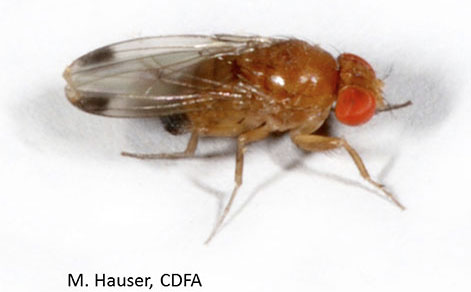
Growers and gardeners who want to stay up-to-date on the latest SWD monitoring, management options and more, can visit the new Spotted Wing Drosophila blog, managed by Juliet Carroll, Fruit IPM Coordinator for the New York State IPM Program.
The crops at highest risk for SWD infestation include fall raspberries, blackberries, and blueberries. June-bearing strawberries may escape injury, but late summer fruit or day-neutral varieties may suffer damage. Cherries, both tart and sweet, elderberries, and peaches are also susceptible. Thin-skinned grapes can be infested directly, though cracked or damaged berries are more susceptible.
For more information:
- Cornell Fruit Resources SWD page
- Chemical Control of Spotted Wing Drosophila in Berry Crops – For commercial growers.
- How do I manage Spotted Wing Drosophila (SWD) in my garden? – For home gardeners


